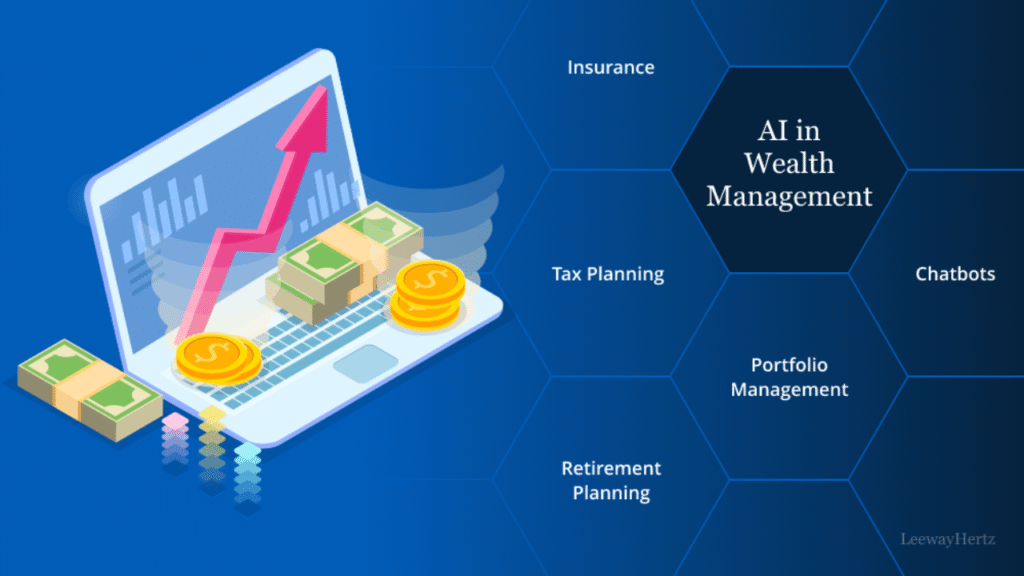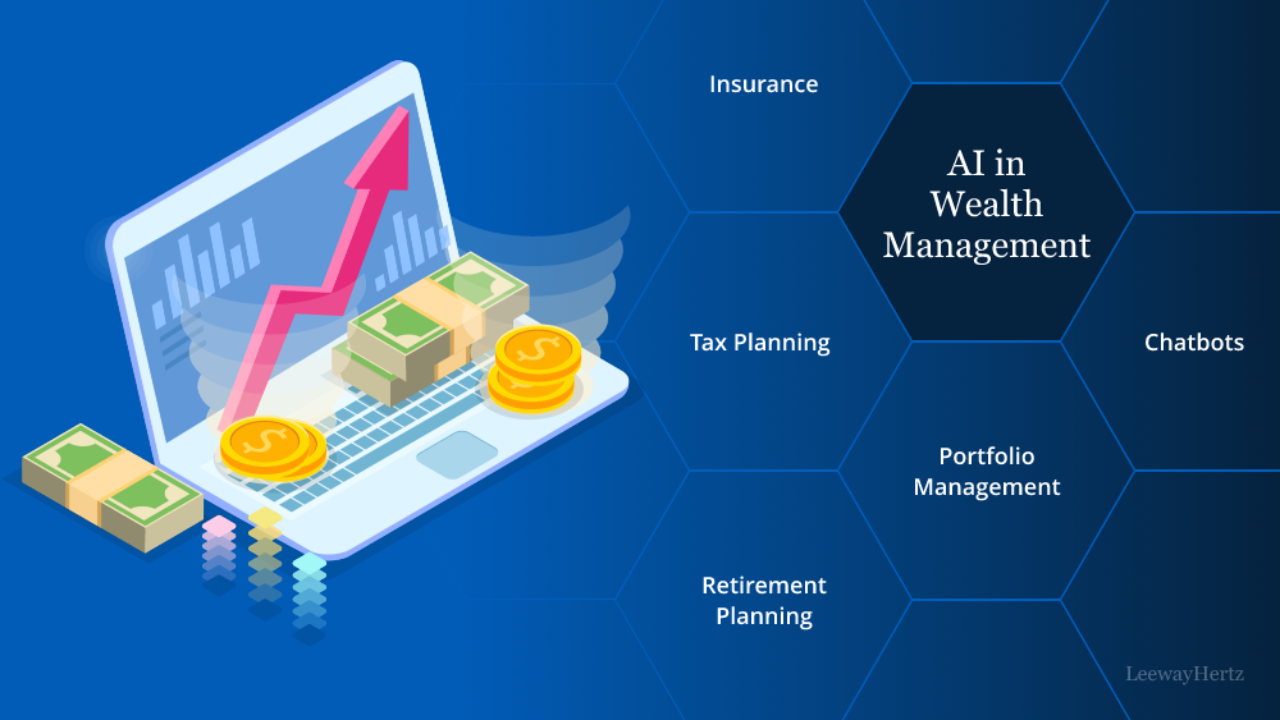
In the past, wealth management was a service accessible only to the affluent, requiring personal meetings with financial advisors and hefty fees. But in the age of AI, that’s rapidly changing. Robo-advisors—AI-driven platforms that manage your investments—are democratizing finance and reshaping how people grow and protect their wealth.
From automatic portfolio balancing to goal-based investing and tax-loss harvesting, these digital advisors offer smart, low-cost financial planning that rivals traditional human advisors. Are they the future of wealth management? Let’s explore how robo-advisors are transforming the financial industry.
What Are Robo-Advisors?
Robo-advisors are automated platforms that use algorithms, machine learning, and financial models to manage clients’ investment portfolios with minimal human intervention. They typically begin with a questionnaire to assess a user’s financial goals, risk tolerance, and investment timeline. Based on this input, the AI builds and monitors a diversified portfolio tailored to the individual.
Key Features of Robo-Advisors
- Automated Portfolio Management
AI constructs portfolios using low-cost ETFs (exchange-traded funds) and rebalances them periodically to maintain the desired risk-reward ratio. - Goal-Based Planning
Users can set goals—like saving for retirement, a home, or education—and the robo-advisor will create a custom plan to achieve them. - Tax-Loss Harvesting
The AI identifies underperforming assets and sells them to offset taxable gains, reducing overall tax liability. - Low Fees
Unlike traditional advisors who charge 1–2% of assets annually, robo-advisors usually charge between 0.25–0.5%, or even less. - Accessibility
Most platforms have low or no account minimums, making them ideal for beginner investors.
How Robo-Advisors Work: Step-by-Step
| Step | Description | AI Involvement |
|---|---|---|
| 1 | User inputs goals, income, risk profile | Data collection and profiling |
| 2 | AI builds a personalized investment portfolio | Algorithmic asset allocation |
| 3 | Continuous monitoring and rebalancing | Machine learning and trend analysis |
| 4 | Tax-loss harvesting and strategy optimization | Predictive modeling and automation |
| 5 | Reporting and performance updates | AI-driven insights and dashboards |
Benefits of Robo-Advisors
- Efficiency: Instant portfolio updates and real-time market adjustments.
- Cost-Effective: Lower management fees and minimal transaction costs.
- Objectivity: No emotional decision-making or sales bias.
- 24/7 Access: Investors can log in anytime to check progress or adjust plans.
- Financial Inclusion: Enables younger and less wealthy users to start investing.
Robo-Advisors vs. Human Advisors
| Factor | Robo-Advisors | Human Advisors |
|---|---|---|
| Cost | 0.25% – 0.5% of assets annually | 1% – 2% of assets annually |
| Accessibility | 24/7 digital access | Scheduled appointments |
| Personalization | Algorithmic based on questionnaire | Deeper, more holistic customization |
| Emotional Support | None | High (especially during market dips) |
| Tax Optimization | Automated | Customized but manual |
| Minimum Investment | As low as $0 to $500 | Often $100,000 or more |
Limitations and Risks
- Lack of Human Touch
During volatile markets or life changes, clients may crave human reassurance and strategic discussion. - Generic Advice
AI recommendations are based on fixed models and may not address complex financial needs like estate planning or business income. - Over-Reliance on Algorithms
Markets are unpredictable, and past data can’t always predict future outcomes. AI decisions may sometimes lag or underperform. - Security Concerns
As with all digital services, robo-advisors must guard against hacking, identity theft, and data breaches. - Limited Product Range
Most robo-advisors focus only on passive investing; they don’t usually provide access to alternative assets or active trading.
Major Players in the Robo-Advisory Market
| Platform | Management Fee | Minimum Investment | Notable Feature |
|---|---|---|---|
| Betterment | 0.25% | $0 | Goal-based investing with human support |
| Wealthfront | 0.25% | $500 | Free financial planning tools |
| Schwab Intelligent Portfolios | $0 | $5,000 | No advisory fee, but proprietary funds |
| SoFi Invest | $0 | $1 | Commission-free trading and advice |
| Ellevest | 0.25% | $0 | Tailored for women investors |
The Future of Robo-Advisors
- Hybrid Models: Many platforms are integrating human advisors for high-net-worth clients, combining AI efficiency with human empathy.
- AI-Enhanced Personalization: Future systems will analyze spending behavior, life changes, and external data for more tailored strategies.
- Global Expansion: Robo-advisory services are growing in emerging markets where financial literacy and advisor access are limited.
- Integration with FinTech: Expect tighter links with budgeting apps, credit monitoring, and banking for a unified financial ecosystem.
Overview Table: Robo-Advisors at a Glance
| Feature | Robo-Advisors Today | Traditional Advisors |
|---|---|---|
| Cost | Low (0.25–0.5%) | High (1–2%) |
| Access Level | Open to all | Often high-net-worth clients |
| Technology Used | AI, machine learning, automation | Manual and experience-based |
| Emotional Guidance | Absent | Available |
| Speed of Adjustments | Real-time | Days to weeks |
| Portfolio Rebalancing | Automated | Periodic and manual |
3 Best One-Line FAQs
Q1: Are robo-advisors better than human advisors?
They’re cheaper and faster for basic investing, but lack emotional and complex financial support.
Q2: How do robo-advisors build portfolios?
Using AI algorithms based on user risk, goals, and time horizon, mainly with ETFs.
Q3: Can robo-advisors help with taxes?
Yes, many offer automatic tax-loss harvesting to reduce your taxable income.
Final Thoughts
Robo-advisors aren’t just a trend—they’re a fundamental shift in how people approach investing. They’ve lowered the entry barrier to wealth building and provided intelligent tools that make financial planning more accessible and efficient. While they may not replace human advisors for complex needs, they are fast becoming the go-to option for anyone seeking smart, affordable, and automated wealth management.

